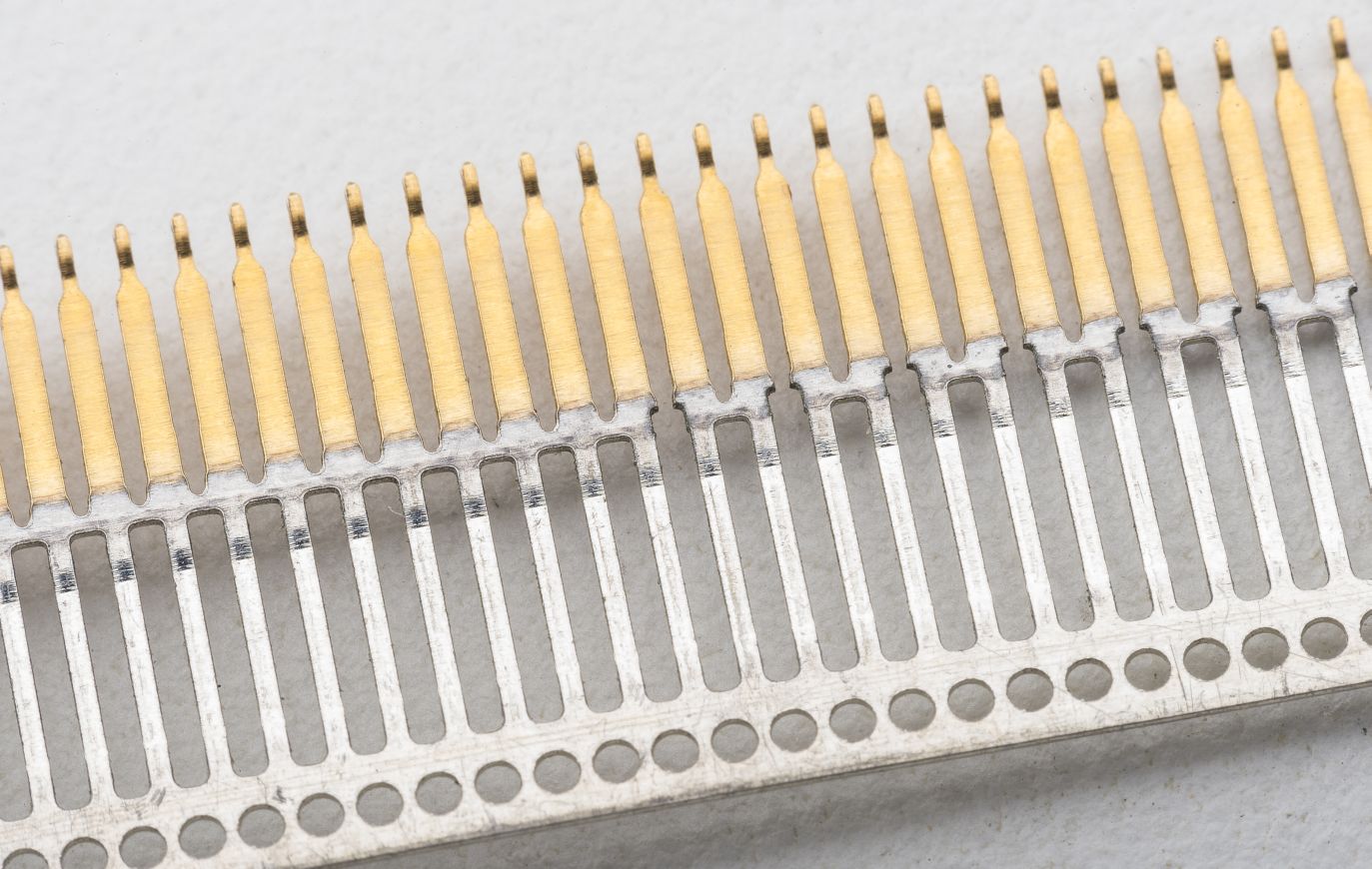
 |
Fineblanking and Metal Stampings

To fully participate in the fineblanking and metal stampings business a company needs to have the capability to produce multiple-station progressive, compound and forming dies along with single-station and progressive fineblanking. Design and construction of tooling with interchangeable cutting elements should also be among the company's offerings. For example, interchangeable elements are applicable with groups of parts where the outside diameter remains constant and the inside hole diameter or locations vary from part to part. In conventional stamping presses in sizes from 20 tons to 250 tons are used.
Fineblanking is a method of punching parts without die break. It is a method of controlling metal flow in the shearing area through the use of an impingement ring, which is pressed into the metal outside the cutting line with great force to restrain the metal. The metal outside of the impingement ring is therefore unable to move inward. A punch-to-die clearance between 0 inches and 0.0003" produces a consistently clean, smooth cut. Fineblanking technology is suited for easily cold-formed materials such as carbon steel, aluminum, copper alloys, stainless steel and other alloyed steels. Any metal with Rockwell B or less is ideal.
There are two different fineblanking press systems: the fully hydraulic press and the mechanical fineblanking press with hydraulically actuated V-ring and counter pressure. These two types can be presses for moving punch only, presses for fixed punch tools only or presses which are convertible to both tool systems. Fineblanking requires three forces which can be separately and independently regulated. They are blanking or cutting force, holddown or V-ring force, and counter and ejection force.
Generally, fineblanking is recommended for parts to 1/2" thick. The requirements meet any or all of the following criteria:
- parts requiring surface finishes on sheared edges down to 16 RMS
- parts with close flatness tolerances
- parts with tight dimensional tolerances
- parts with holes and/or slots smaller than material thickness
- parts with wall thicknesses less than material thickness
- parts requiring secondary operation, such as drilling, reaming, countersinking and grinding
Typically, a finished gear can be made with each stroke in fineblanking production. Tolerances down to 0.0002" can be achieved. Basically, parts are produced in a single stroke in which inner and outer forms are cut, free of fracture over the entire material thickness.
Hydrel AG of Switzerland reported that forces occurring during fineblanking are 1.5 to 2.5 times those used in conventional processes. Therefore, tooling must be robust. Good guideways, proper steel (tool steel, HSS and tungsten carbide steel), properly sized and located V-ring, and correct moving and fixed punches are important considerations in fineblanking. Determining factors for the performance and life of a tool are cutting speed, material thickness and tensile strength, tool lubrication and cooling, type of tool steel and the type of press.
Hydrel also noted that there are still certain limits to fineblanking. These are the production part materials and the cutting tool steels. For this reason, a closer relationship among product and tool material suppliers and manufacturers in the fineblanking field is being encouraged to improve raw materials.
Industries served by fineblanking and conventional stamping are automotive, general machine and equipment, communications, appliances, camera and video, instruments, ordnance and cutting tools.
|
|
| Home | About Us | Back To Technical Library | Contact Us |
|
Copyright © 1996-2010 JobShop.com. All Rights Reserved. General or Technical Questions? E-mail support@JobShop.com |